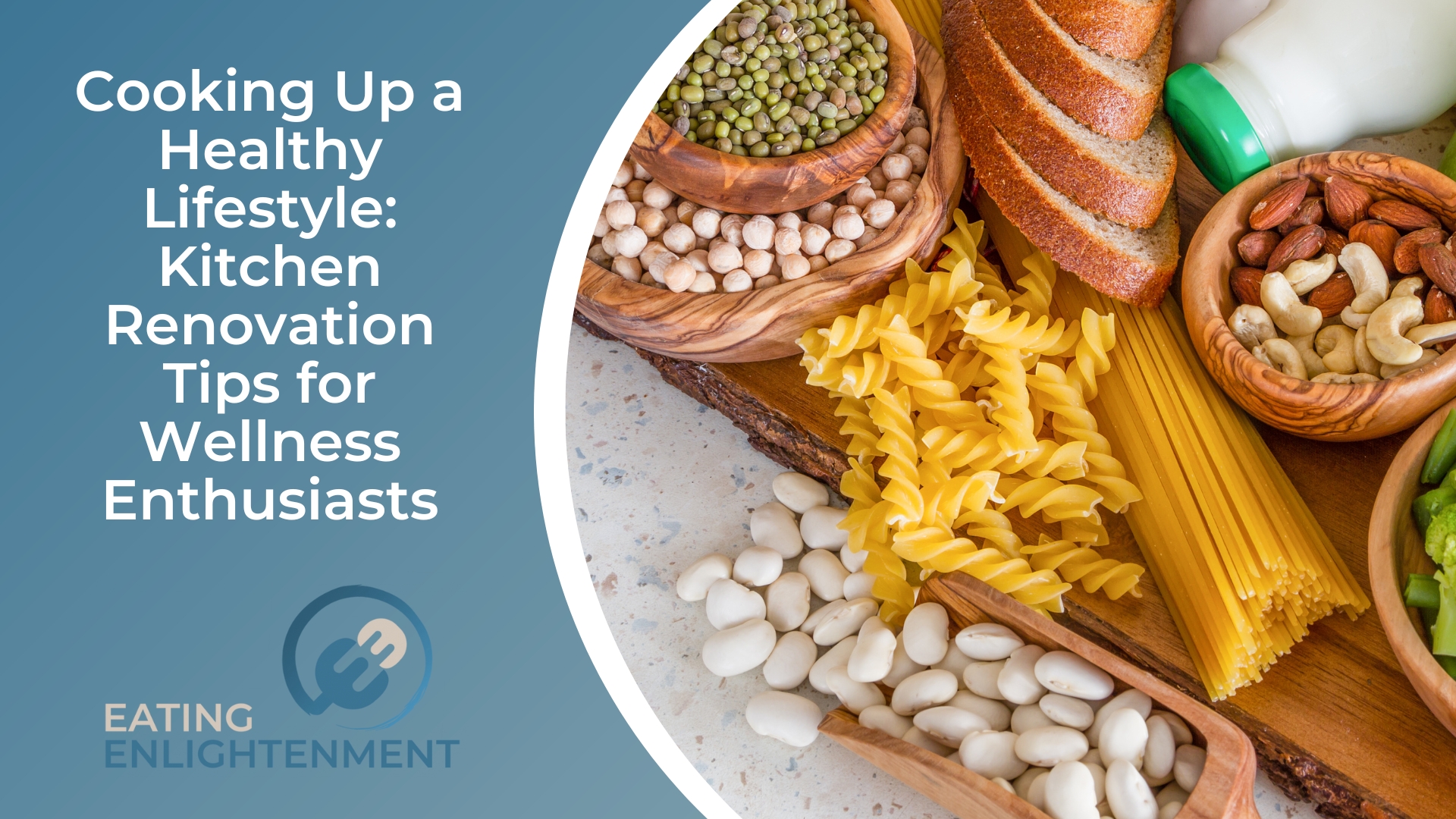For the wellness-minded home chef, the kitchen is far more than the heart of the home; it’s the crucible where a commitment to health and caring for the environment is crafted into every meal.
Renovating your kitchen isn’t just about fresh tiles or a new splash of color—fundamentally changing how you approach the redesign can elevate your culinary space to a temple of vitality and sustainability.
This guide steers through the high seas of kitchen remodeling, ensuring that every decision is anchored in cultivating a healthier lifestyle, safe from the undercurrents of high-stress modern life.

Prioritize Functional Design
Start with a ‘work triangle’—the space between your stove, fridge, and sink. This design principle streamlines your movement and makes cooking more efficient, cutting energy and time costs. For islands or breakfast bars, consider ergonomic heights that encourage comfortable cooking and eating, as well as versatile spaces that can be used for food prep or a quick morning smoothie.
Moreover, functionality is often achieved easily with the help of kitchen renovations professionals, whether from your local area or from those that are known for their quality work. Beyond your primary layout, focus on the details too. Deep, wide drawers under your counters can store cookware and cutlery, reducing clutter and making items easily accessible. Customized cabinets that cater to your collection of spices, oils, and bottles of vinegar will prevent a desperate search mid-recipe.
Choose Non-Toxic Materials
In the ethos of a health-centric kitchen, the materials you use should not only be durable and functional but also non-toxic. This is especially crucial as they will be in direct contact with food. Opt for paints with low VOC (volatile organic compounds) emissions, as these can contribute to poor indoor air quality. Look for cabinetry and countertops made from formaldehyde-free woods and natural stones.
When selecting flooring for the cooking sanctuary, stay away from synthetic and treated materials that might release unwanted chemicals into the air. Natural wool carpets, cork, or FSC-certified hardwood are great choices. And remember, spending a little more now for non-toxic materials can save you medical costs and concerns about health down the line.
Integrate Smart Storage Solutions
Organization is key to efficiency, and when efficiency aligns with wellness, you’ve hit the jackpot. Smart storage options like lazy Susans in corner cabinets, pull-out shelves, and double-tiered cutlery trays can maintain order and accessibility. Think about your daily routine and how to optimize it—the golden rule is to organize by functionality, not space.
For instance, if you’re a baker, design a dedicated pantry or cabinet area for flours, grains, and sweeteners within arm’s reach of your prep area. If juicing is your morning ritual, juicer, and a rainbow of fruits and veggies should be within sight and easy reach. Smart storage solutions actively encourage mindful, healthy cooking habits.

Opt for Energy-Efficient Appliances
The sustainability aspect of your kitchen revamp is crucial for both the planet’s well-being and your own. Energy-efficient appliances may come with a slightly higher price tag but they also come with the promise of lower energy bills in the long run. Always look for the Energy Star label, which indicates that the appliance meets strict energy-efficient criteria set by the U.S. Environmental Protection Agency.
When you’re in the market for a new refrigerator, consider the size that best fits your needs. A larger fridge typically uses more electricity than a smaller model. Dishwashers have their own efficiency metrics—for example, a high energy factor (EF) for dishwashers suggests more efficient cleaning, which means less water and energy usage over time.
Incorporate Natural Lighting
Bringing the outdoors in with an abundance of natural light not only reduces the need for artificial lighting but also instantly bestows a sense of calm and well-being. The health benefits of natural light range from enhancing your mood and productivity to boosting your vitamin D levels, which is essential for healthy bones and a strong immune system.
Skylights are an excellent way to increase daylighting in your kitchen, while window walls or ‘window-scapes’ can also offer breathtaking vistas and an infusion of greenery if your kitchen overlooks a garden. When enclosed spaces must be lit artificially, install LED bulbs that are energy-efficient and long-lasting, ensuring both wellness and sustainability are equally represented.
The act of renovating your kitchen is an intimate and powerful gesture towards a lifestyle choice—one that values your well-being and the health of the environment. By implementing these kitchen renovation tips, you not only create a functional and beautiful culinary haven but also weave a narrative of mindfulness, productivity, and security for the body and soul.
Remember, the kitchen is where you craft the building blocks of your life’s sustenance. In this light, each material, each surface, and each appliance should serve the purpose of nurturing a space that’s full of life, love, and health. Invest in your kitchen, and you’re truly investing in a healthier you, every single meal.



